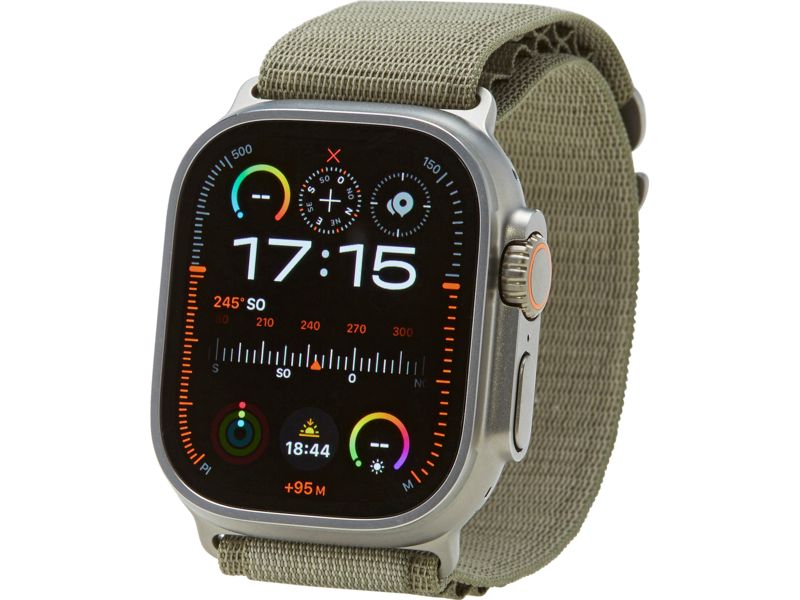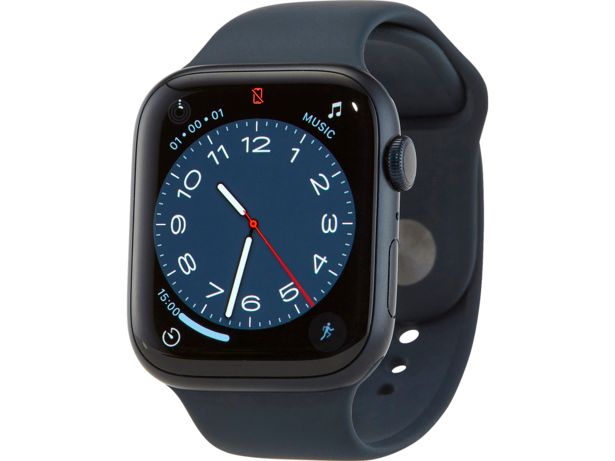The best way to monitor your heart rate with a smartwatch

In this article
- Why monitor your heart rate?
- Best fitness tracker with heart rate monitor
- Best smartwatch with heart-rate monitor
- Apple Watch and other smartwatches with advanced heart-rate features
- Specialist heart health wristwatches: Omron HeartGuide
- How to make sure you're tracking your heart rate accurately
Wearables are getting serious about health, and the ability to track your heart rate is becoming the norm.
Long gone are the days when wearables – smartwatches and fitness trackers – were little more than souped-up pedometers.
Health and wellness features, such as heart-rate monitoring and pulse-oximeter tracking, have become increasingly popular in wearable devices.
But why measure your heart rate? Can you rely on your wearable to track it accurately? Which wearables offer more sophisticated heart-health features? And how can you use your wearable to get the best out of it? Read on to find out.
Or, head straight to all the best smartwatches from our tests to see which come out on top.
Tech tips you can trust – get our free Tech newsletter for advice, news, deals and stuff the manuals don’t tell you.
Why monitor your heart rate?
If you have any concerns about your heart, you should, of course, see your doctor. Assuming your interest is more casual, a heart-rate-monitoring wearable can be a big help in helping you get the most from your workouts.
By monitoring your heart rate, you can make sure you're pushing yourself hard enough during bouts of high-intensity exercise and recovering enough afterwards.
Longer term, keeping an eye on your heart-rate patterns can help you notice what may be causing spikes during everyday life and tell you a lot about your cardiovascular health.
Wearables that collect data on your heart rate can also give you more accurate feedback on other aspects of your health - for example, your sleep, calorie burn, stress levels and VO2 max (an estimate of the maximum amount of oxygen that you use during exercise - and therefore, a measure of your aerobic fitness).
Best fitness tracker with heart rate monitor
If you don't want a smartwatch, and you'd rather just have something lightweight that you can slip on your wrist and forget about, there are plenty of fitness trackers offering heart-rate monitoring.
Fitbit Charge 5 (£130)

This lightweight fitness tracker might catch your eye if you’re looking for a device you can wear all day and night. It has a built-in GPS tracker so you can leave your phone at home when you’re out and about too.
It has a good set of heart-rate monitoring features including 24/7 heart rate monitoring, Active Zone Minutes (a feature that uses your heart rate to guide you towards your desired exercise intensity level), heart-rate variability and Cardio Fitness Level (a measurement of how well your body uses oxygen when you’re working your hardest).
Fitbit also has a compatible ECG (Electrocardiogram) app, which assesses your heart for rhythm irregularity and allows you to share the results with your doctor. As always, you shouldn't take results as gospel, and should always contact a health professional if you have any concerns.
Like the sound of all the heart-rate monitoring features this tracker has to offer? Read our full Fitbit Charge 5 review to find out how accurate and easy to use it really is.
Best smartwatch with heart-rate monitor
If you’re looking for something a little more advanced, it’s worth considering a smartwatch. These usually offer all of the same features as fitness trackers as well as having the ability to link together notifications from your smartphone - and often on a much bigger screen.
Huawei Watch GT 3 (£200)

This smartwatch has fairly advanced features given its price, including letting you answer and reject phone calls. It also has a 46mm AMOLED touchscreen, so you can see everything at a glance.
Huawei claims that the Watch GT 3’s TruSeen 5.0+ heart sensor presents a ‘newly upgraded’ heart-rate module that improves the accuracy of the health data it produces. This watch will show you your heart rate 24/7, as well as daily heart-rate ranges (including during exercise) and resting heart rate. You’ll be alerted of any especially low or high heart rates too, and there’s a pulse oximetry function to measure the amount of oxygen in your blood.
You can also track over 100 different sports and sync this watch with a range of selected gym equipment.
Find out exactly how well this smartwatch performed in our accuracy and ease of use tests by reading our full Huawei Watch GT 3 review.
We see big differences in how accurately wearables can measure your heart rate, though. Some manage this very poorly, while others only manage to report accurately in certain conditions (such as struggling during low-intensity exercise, but getting more accurate at higher intensities). These include wearables at the cheaper end of the market, as well as more expensive models.
Apple Watch and other smartwatches with advanced heart-rate features

Released in 2018, the Apple Watch Series 4 was the first smartwatch to offer ECG (electrocardiogram) readings directly from your wrist via an electrical heart-rate sensor.
The sensor measures the electrical signals in your heart to check for atrial fibrillation, or AFib (irregular heart-rate rhythms), which can put you more at risk of stroke. You can download readings into a PDF to share with your doctor.
It also has an optical heart-rate sensor (light from the sensor penetrates the skin to estimate heart rate). This measures your heart rate throughout the day and calculates various metrics for you, including the average heart rate while you're walking, your Heart Rate Variability (HRV) and heart rate during a workout, and Breathe (guided breathing) sessions.
You can also check your heart rate at any given moment by opening the Heart Rate app, and you can turn on the option to get notifications if your heart rate goes above or below a chosen beats per minute (BPM).
The more recent Apple Watch Series 8 and Series 9 also offer all of these features - some earlier models have some, but not all (not the ECG feature, for example).
However, the Apple Watch is expensive compared with other smartwatches. Read our review of the Apple Watch Series 9 (from £429) to see how well it performs.
Alternatively, compare all Apple Watch models in our Best Apple Watch to buy guide.
Other smartwatches for tracking heart health
If you want to keep costs down (or you don’t have an iPhone to link an Apple Watch to), there are other watches available with heart-health features.

The Fitbit Sense (£220) has a number of heart-rate features to rival Apple. It has standard heart-rate monitoring, can take ECGs and even combines your heart rate with your skin temperature sensor readings to report on your stress levels.
Sounds appealing? Discover if it impressed in our lab tests in our full Fitbit Sense review.

If you’re an Android user, the Samsung Galaxy Watch 6 might catch your eye. Alongside the usual heart-rate monitoring, it also has the ability to monitor your blood pressure or perform an ECG test on your heart rhythms. It can estimate your VO2 max (a measure of your aerobic fitness) too.
Read our full Samsung Galaxy Watch 6 review to see how it fared in our rigorous performance tests.

Looking to stick to a stricter budget? The Oppo Band (£35) offers both heart rate and blood oxygen monitoring, plus 11 activity-tracking modes and sleep tracking. It lacks some key features such as GPS tracking though, but packs in plenty considering its low price.
Read our full Oppo Band review to see exactly how accurate and easy to use this fitness tracker is.
Specialist heart health wristwatches: Omron HeartGuide
Some wearables go beyond this, making heart health their USP.
The Omron HeartGuide (£499) is one such device and was marketed as the world's first clinically validated wearable blood pressure monitor.

It promises to monitor your blood pressure, steps, distance, calories and sleep, and it displays some (limited) notifications from your smartphone. Omron says the HeartGuide can also measure your heart rate, but it will do so only when you ask it to measure your blood pressure.
You'll need nimble fingers to take it on and off, though, which you'll need to do each time you want to do the washing up or go for a swim. It can survive being splashed with water while you wash your hands, if you're careful, but it can't survive being submerged in water. The watch also feels heavy and cumbersome.
Note that Omron says you shouldn't use the Heart Guide if you've had a mastectomy. Traditional blood pressure monitors can carry similar warnings.
Head to our guide on the best blood pressure monitors for more handy hints and tips to get the most for your money.
How to make sure you're tracking your heart rate accurately
There are a few things you can do to give your wearable the best chance of tracking your heart rate accurately.
- Make sure your smartwatch or tracker is sitting snugly but comfortably on your arm, with the sensors flat against your skin above the wrist bone
- Keep the smartwatch or tracker clean (following the manufacturer instructions, to avoid damaging it). Sweat can also interfere with readings
- If you have poor circulation or you just feel cold, warm up a little before taking a reading
- Smoking or drinking alcohol before taking a measurement can cause your heart rate to differ from your normal readings. Try taking a measurement again later.
Tattoos and heart-rate sensors

A number of manufacturers say that having tattooed wrists can interfere with heart-rate monitoring. For example, Apple states that “the ink, pattern, and saturation of some tattoos can block light from the sensor, making it difficult to get reliable readings”. Garmin has a similar statement on its website.
If you have one heavily tattooed wrist, wear your wearable on the other one if it's clear for everyday use. Most smartwatches and fitness trackers have settings so you can select what wrist you’re wearing it on, so it shouldn’t matter if it’s your dominant or non-dominant hand.
See all our smartwatch reviews and fitness tracker reviews.






















